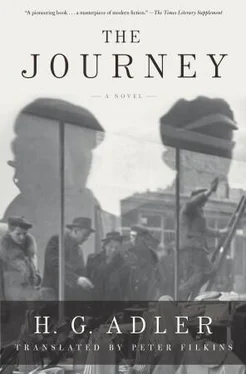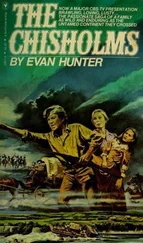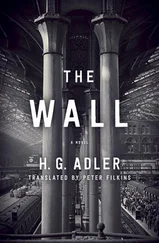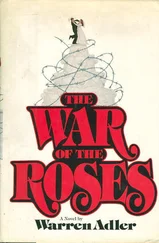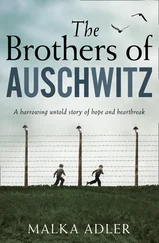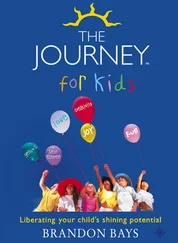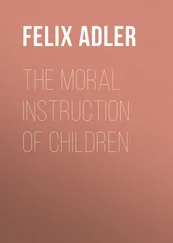“Stand still and behave, dear children, and pay attention to what I have to tell you! What’s here once was. This woman was once alive. We don’t really know anything about her, but isn’t it amazing that we indeed do know so much about her because of advances in science? Back then everything was gathered up and sorted out, then wrapped in cotton matting and sent off to the museum. Here it was carefully unwrapped and cleaned up as good as it could be. Then everything was set in order and described exactly. There are thick books written about all of it. When you are older you can read about it sometime. In the school library we also have a thick volume with many colorful pictures. You’ll find everything there described in detail. We will be writing an essay about this, so pay close attention! If you look closely at everything here, then you won’t need the book at all and can write your own proper description. The child who does the best work will be honored by the museum director. No pain, no gain. So all eyes here! Those are the shoes that this woman wore. They’re made of leather. How well preserved they are! You all can imagine what it was really like, even though it was at least a hundred years ago that this woman was sent off on her journey along with many others. Yes, those were great days, when people could still be shipped back and forth, though I’ll say more about that next time!”
Most of the schoolchildren are well behaved and press their noses to the glass and lick the corners of the case. Only some misbehave and giggle, poke one another with their elbows, don’t care about the noteworthy goods, and hide behind the display cases.
“I thought you would all be nice in the museum. Just remember that this is sacred ground. Only because they have so much to teach us, no one buried these mementos, but instead displayed them so that we could learn by looking at them. Remember that all these people were once alive and went to school like you, even Frau Schwarz here. Just try to imagine that it is quite possible that this woman had children, just like all of you here. This photo here, for instance, in the opinion of scholars, can only be of a son, and no doubt this boy and his siblings cried once they no longer had a mother. Don’t be surprised if you find yourself experiencing a shudder of deep fear here in the museum. These are powerful and precious memories.”
“Excuse me, teacher, but where are the bones and skull of this Frau Schwarz? Why are they not in the museum as well?”
“The bodily remains of Frau Schwarz are not here. It could be that the corpse was somehow lost and no one has found it yet. Nonetheless maybe someday it will be dug up, since everywhere so many interesting discoveries are made these days. However, it’s also possible that the earthly remains were cremated, thus making it difficult, first, to find the ashes and, second, to prove that a pile of ashes contains the remains of Frau Schwarz. When something is not known for sure, dear children, then it’s not suitable for display in a well-organized museum that plays an important role in the scientific community. That’s why you all have to be satisfied with the burial goods that have been carefully gathered together here. It’s indeed a miracle when something remains of a person. But now you’ve seen enough, we have to move on.”
Only Caroline remains standing in the museum, because she cannot pull herself away from what she’s looking at. Who knows whether these things belonged to her great-grandmother or even her mother back then? Everything looked so familiar to Caroline. She is sure she has seen these things somewhere before. But that was a long time ago, when the piano still stood in the parents’ living room. But Caroline could also be confused, because all of the contents of the museum look remarkably alike. The Romans also had central heating. Nothing has changed. People also supposedly wore shoes in the Ice Age. Glasses already existed in the Middle Ages. But these things are not that old. Hardly any of them were made by hand, except the nightcap. Everything else is factory-produced, just like those made and sold today. Yet that doesn’t matter so much. Such things also did not belong to Caroline’s long-lost ancestors, much less a woman who had been saddled with a fate as overwhelming as one endured a hundred or even a thousand years before.
Caroline is frightened at the thought that such a thing could also happen today. The times don’t change at all, they just pass by. Just as the world looks when a child first gazes upon it, so it is right up until death. This woman did not die a natural death. It was an accident. Zerlina couldn’t prove that she starved to death. A train tipped over, and as a result there were so many dead that the bones couldn’t be sorted. Only the bag survived in part. Now it’s here. The children had minded it and made sure it didn’t disappear for good. Frau Schwarz had no idea what would happen when she got on the train with all of the other passengers. She in fact was happy about the journey and looked forward to the destination, and yet there came the sudden end. How many tears the newspaper must have caused to flow back then! We regret to inform our readership about the sudden death of a special long train. In lieu of flowers it is requested that donations be made to the Technology Museum; drop off all objects there, fully numbered. Consignment sheets are available at the front desk of this newspaper so that each individual can turn in something either of his own or of his next of kin. Signed, The Editors, on behalf of the grateful children.
Yet what if it wasn’t like that? Then it was different. It was. Who can say how it was? The dead! They say it. They are asked to bear witness. You must preserve justice. The judge summons all to lift themselves out of the rubbish and answer him without fear. How did this happen? Two sisters. One stayed, one left. Both died. Because they hid separately. One crawled into the piano and the lid fell upon her. The song was over. Her parents scolded her because the boy with the goose had been tipped over. The goose was broken off. The figure was not made of alabaster. It was only made of plaster, white dust, powder, and nothing more. The boy pulling the thorn, however, made it through. He was made of real stone. He continues as ever to pull the thorn from his Achilles’ heel and can never finish the task. He dies without ever ceasing. He could have saved himself the trouble if only he had bought some shoes. The parents can scold all they want to, but still he died and died. Otherwise there was nothing for him to do, because the times don’t change, they only pass by, though the thorn of rubbish lasts through all times.
No, that can’t be possible. If one has good intentions, nothing can happen. Our trains, for instance. Their safety coefficient. At least before the war. It was murder. Ida was pulled off the train. Then everyone stood there. The people on the left, the luggage on the right. The people were finished off, the suitcase was sent to the museum. One could not allow technological progress to be halted, but one also had to preserve its story as well. That’s why the people were killed, there being no need to collect their ashes. They died and dissolved into the earth. Against such treatment all people need to protest: We won’t do it! We don’t want any luggage, we want our life back! Someone has to force the train’s engineer to go back if he won’t do it on his own! First to Ruhenthal and then home! The journey back! No one is allowed to send anyone on a journey, especially to death, if he doesn’t have a ticket for it as well! Schedules need to be publicly displayed, enough with secrecy, it’s obvious that the connections need to be listed so that each can choose for himself! Only when one understands everything and has thought it through thoroughly does the plan for the journey come together. Then each travels as he wishes. The time doesn’t change, but instead a person travels through according to his own wishes. The children, however, must not be sent to the museums, where they cry or cause mischief. Instead you should show them maps of all the countries and explain it to them in school. That way even as youngsters they can learn how to read timetables and not be afraid of trains, since for them it’s free. Every child loves to play with trains. This way he or she will at last catch their train.
Читать дальше
